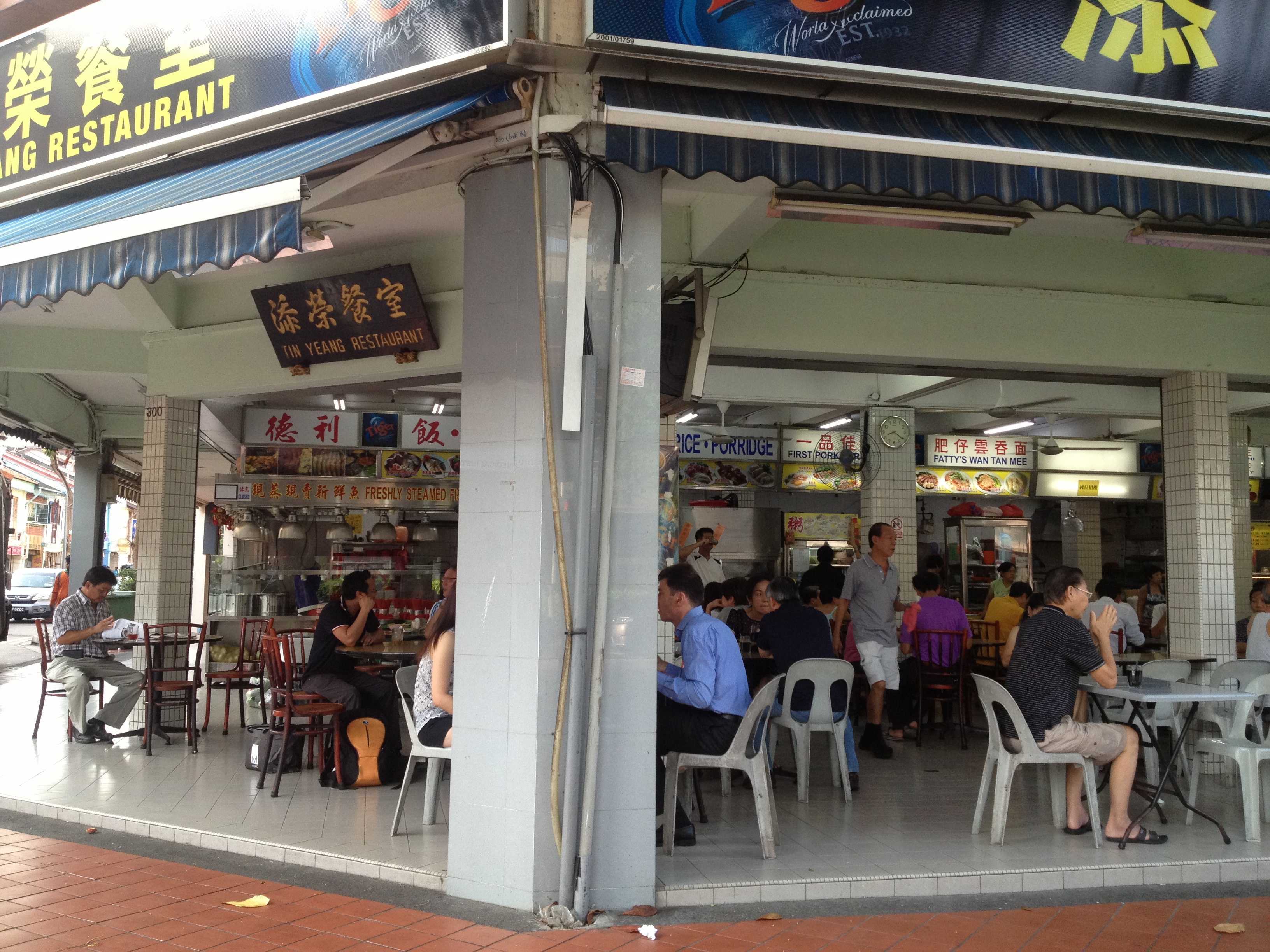It’s dark and glossy, with a rich, fragrant flavour. It’s roasted locally by small, artisanal workshops. It comes with a distinguished history and enough retro-styled equipment to delight any hipster barista. And it’s made in a sock (yes, you did read that correctly the first time).
Kopi, the local coffee of Singapore and Malaysia, is probably the best-kept secret outside its home region.
But it deserves a much wider fan base. Those of you who, like us, have had the pleasure of travelling in Southeast Asia may also have had the unique experience of visiting a kopitiam, the place where kopi is served.
Although the word kopitiam means ‘coffee shop’ in a characteristic diaspora fusion of Malay and Hokkien, the kopitiam is far more than just a cafe: it’s the nexus of kopi culture.
The kopitiam was the neighbourhood ‘third place’ throughout Singapore and Malaysia well before Starbucks laid claim to the term.
Overseen by a staff member traditionally clad in blue-and-white striped pyjama bottoms and a white singlet, the kopitiam is where you go to meet friends or read the newspaper over light bites, breakfast, and of course, kopi.
Visitors are spoilt for choice, because even the humblest kopitiam serves more variants than the average Shoreditch roastery.
Want your brew with condensed milk? Just ask for kopi. Fancy it black, no sugar? Make it a kopi o kosong.
And if your preferred beverage is the zeitgeisty bullet-proof coffee, you’re in luck: these guys have been stirring butter in their brew for generations. If you find yourself in the right sort of establishment, you’ll even get to drink from the time-honoured, floral-patterned kopitiam crockery.
As for the coffee itself, it’s the result of a process developed in the late 19th century. Kopi is made from robusta, a coffee species too often scorned for its lack of finesse.
This is unfair: while robusta isn’t exactly the subtlest of coffees (the clue is in the name), when handled right its low acidity and full flavour make for a delicious result.
Robusta is especially well suited to the treatment which transforms the green coffee beans into kopi.
Grown in Indonesia and roasted locally in small batches, the kopi-to-be is naturally high in fat, sugar, and caffeine.
The first two compounds play an important part when the beans are roasted, imparting a caramel-like richness which holds its own even when the final brew is mixed with condensed milk or butter.
Even more significant than the coffee’s natural qualities are the additions made by the roaster.
Mid-way through the roasting process, the beans are coated in varying proportions of raw sugar and margarine or butter, before being given a further roasting at around 180 degrees C. It’s a similar process to the one used in the production of Spanish torrefacto coffee.
If you’re lucky enough to visit a kopitiam, make sure you get your hands on some kopi coffee. But if kopi doesn’t float your boat, there are plenty of other gourmet coffees to choose from – from Colombia to Honduras, Peru to Nicaragua, there’s something for everyone.
And not all coffee in Singapore and Malaysia becomes kopi. Beans which have been roasted normally, without added ingredients, are known as ‘white coffee’, a term sure to confuse many an unsuspecting traveller.
But if you compare the appearance of kopi beans to that of their white coffee counterparts, it makes sense: the former are shiny and black, in a carapace of caramelised sugar, whereas the latter look, if not white, then comparatively pale.
And of course the final thing which makes kopi truly unique is that it’s made in a sock. Not a real sock, but a sock-like brewing sac attached to a wire loop.
When brewing, the ground kopi is placed inside the sock, which in turn is suspended in a pot with a long spout. The result is an iconic, palate-pleasing drink, which in our opinion richly deserves its status as ineffable cultural treasure.
Wyatt Cavalier


















